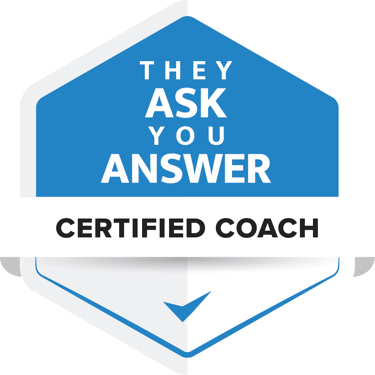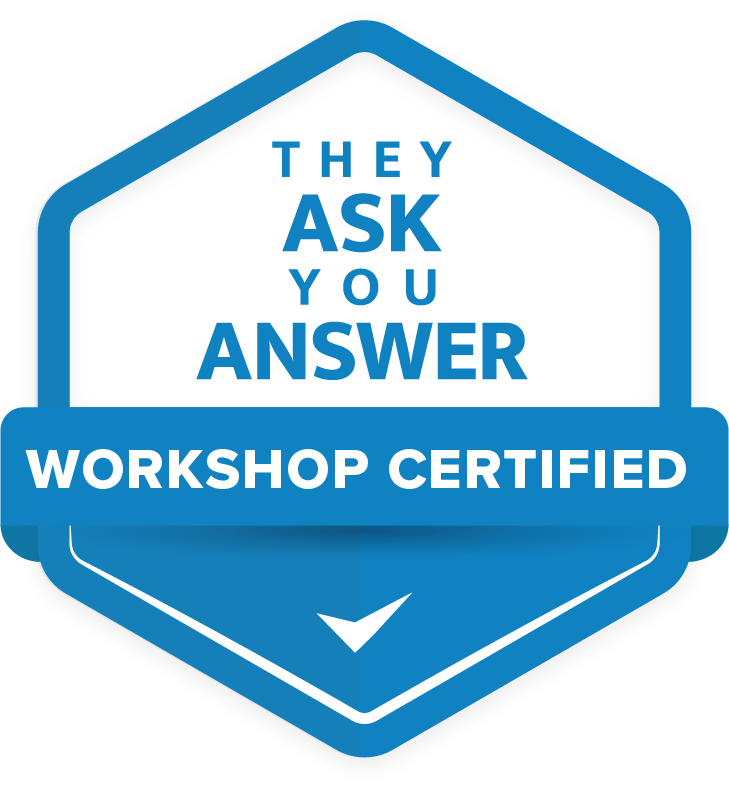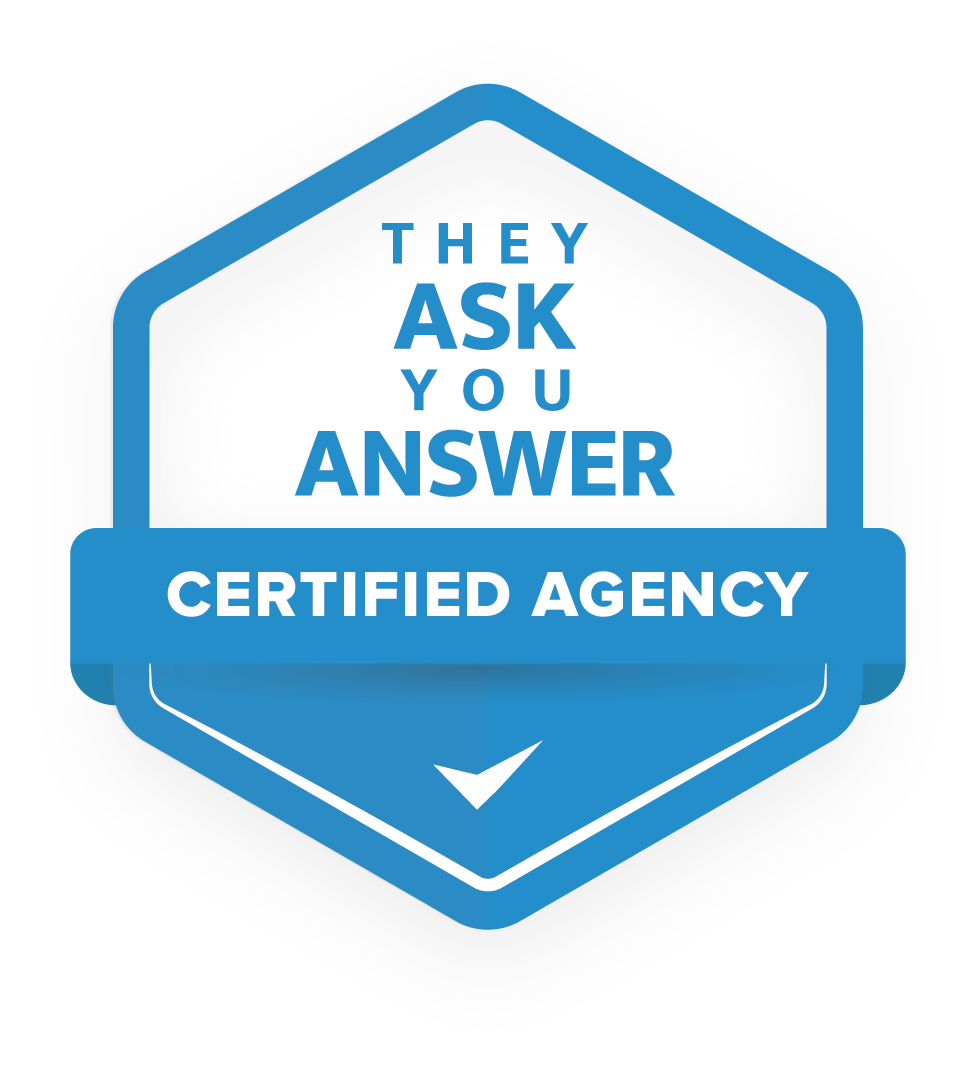7 ways ChatGPT can help you write content

As a They Ask, You Answer content manager, you have a tough job.
You're often the only person in the company who deals with content, and it's your job to make sure all the questions your customers ask are answered in articles that generate traffic, leads and sales.
- You need to create and maintain a content schedule.
- You have to lead content brainstorms with the revenue team.
- You need to get input from content experts.
- You have to write the content
- You need to monitor content performance.
And usually you do all these things at once.
I know how you feel. As a content manager at Buzzlytics, I run into the same challenges. That's why I've been experimenting heavily with ChatGPT recently to see how this tool can help me do my job faster and better.
In this article, I share 7 ways ChatGPT can help you write your content. Whether you're looking for inspiration for blog topics, want to get from a transcript to a first draft quickly, or want to get the most out of each piece of content.
After reading, you will have concrete ideas for how ChatGPT can support you in creating content more efficiently and effectively. This will save you time and achieve better results.
Here we go.
1. Thinking up Big 5 blog topics
Your best source for topics to write about are, of course, your sales colleagues. They hear what prospects and customers (real flesh-and-blood people) are up against on a daily basis, so they are a perfect source of inspiration for your content.
In addition, you can use IMPACT's Blog Title Generator to come up with Big 5 blog topics. You specify what the keyword is, whether it's a product/service, brand/company name, industry, or something else, and then put it to work for you.
But, of course, you can also use ChatGPT for this purpose. Which works like a kind of Blog Title Generator on steroids. All you have to do is tell it what the Big 5 are and what product or service the generated topics should be about, and then you get a list of blog topics you can use like that.
ChatGPT is a Big 5 Blog Title Generator on steroids.
2. Brainstorm the content of your article
Okay, you've decided on a topic, but what should you include or exclude from your article?
A useful tool for this is the content compass. At Buzzlytics, we fill it out for every article we write. It helps us mentally orient ourselves in the right direction.
But even with a content compass, it can sometimes be quite difficult to determine the exact content of your article. What should you do if you get stuck?
Don't panic, ChatGPT can help you with this. For example, you can spar with him about your ideal client's challenges, you can ask him to create an outline, or you can have him prepare interview questions.
3. Doing desk research
This article is about how ChatGPT can help you write content, but here I'm going to sneak a peek at another AI tool I use a lot: Perplexity. I use this tool specifically for doing desk research.
Do you care about having the most recent and accurate information? And do you want to be able to check this information easily? Then you better use Perplexity, and preferably the paid version.
What makes Perplexity especially useful for desk research is that you can gather your research into collections. That way you have all the information on a topic in one place. In ChatGPT, this is not possible.
Tip: The Chrome extension Perplexity AI Companion. It allows you to query the page or website you are currently viewing. For example, I do this when I am only interested in the content of a specific website.
Perplexity lets you gather your research into collections. This way you have all the information on a topic in one place.
4. Converting an interview transcript to a draft version
Have you conducted an interview with a content expert? Then have it transcribed and ask ChatGPT to turn it into an article.
In my experience, ChatGPT is bizarrely good at that. Even if your transcript is full of "filler words" like "um" and "actually" and if it contains all unfinished sentences. So there's no need for your content expert to speak in perfect sentences (who does, anyway?).
Of course, it does matter to think ahead of time in what form you want the article and that you give ChatGPT the proper instructions to get what you want.
ChatGPT is bizarrely good at turning a transcript into a first draft of a blog post.
For example, you can choose to:
- write the article under your own name and include quotes from the content expert.
- write the article on behalf of the content expert (ghostwriting) based on his answers.
Whatever form you choose, ChatGPT allows you to have a first draft of an article very quickly. After that, of course, you'll have to polish it.
5. Write in your company's tone-of-voice
Out-of-the-box, all texts generated by ChatGPT sound the same. But fortunately, you can teach ChatGPT to write so that your texts really sound like your business.
To do so, you must first have a keen sense of exactly what the tone-of-voice and style of the company you work for is.
Then you can give ChatGPT these instructions in each prompt. Polishing will always be necessary, but polishing is often less work than writing from scratch.
If you have a paid subscription, you can also create a custom GPT with instructions for your company's tone-of-voice and style. Every time you give this custom GPT a task, it applies these instructions to the text it generates.
With a paid subscription to ChatGPT, you can create custom GPTs that you can use for any writing task.
6. Write meta descriptions, SEO titles and alt text
Maybe you recognize this: after hours of toil, you finally finish your monster article. You heave a deep sigh of relief and feel intensely satisfied with your work for 5 whole minutes. But then suddenly: oh yes, those meta descriptions also need to be....
I don't know about you, but for me, meta descriptions are a necessary evil: they are not the most inspiring pieces of text to write, they do not contribute directly to Buzzlytics' positions in Google, and often Google does not even adopt my carefully written meta descriptions.
On the other hand, a good meta description does ensure that people will click through to your website.
So you want to complete them, but you don't want to spend too much time on them.
Fortunately, ChatGPT turns out to be very good at helping with this as well. As with SEO titles and alt text for people with visual impairments.
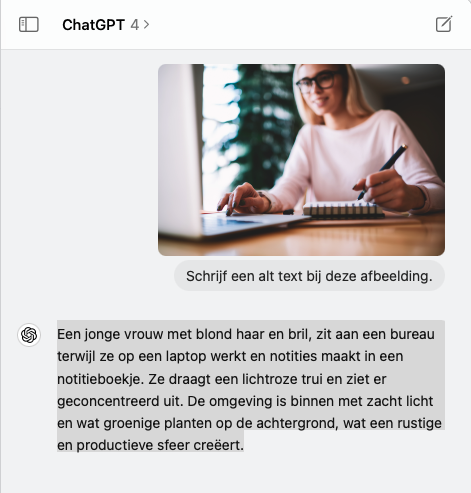
7. Content repurposing
Are you already regularly converting your existing content to another format or channel? Smart move. That way, you not only save time and effort, but you also ensure that your hard work reaches even more people. Win-win.
This is another thing ChatGPT can help you with.
For example, you can have an extensive blog post turned into a video script for a video you post on YouTube. That way you reach a whole new audience that would rather watch than read.
ChatGPT can convert your blog post to another format or cut it up into social media posts.
But you can also have your blog post chopped up and used as social media posts for different channels. Each paragraph can become a separate post. Perfect for platforms like LinkedIn, Twitter or Instagram.
I asked ChatGPT to come up with 3 suggestions for a LinkedIn carousel based on my blog How to write a blog that generates traffic, leads and sales. Below you can see one of them. As you can see, with some minor adjustments, I can copy the text right into Canva.
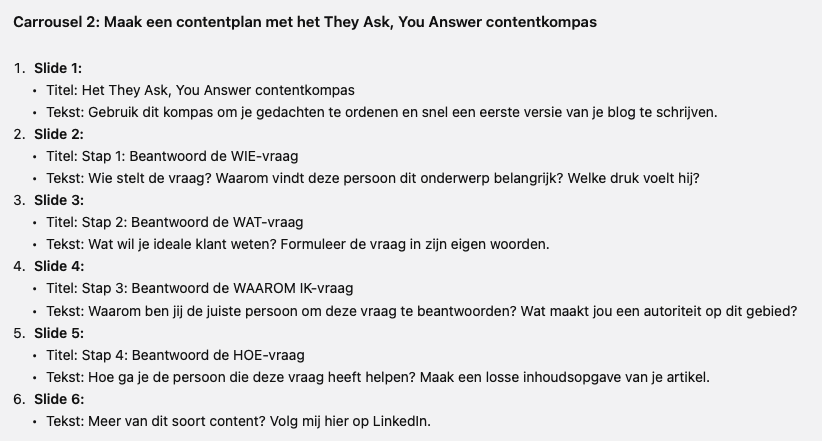
And definitely don't forget your newsletter. ChatGPT can create teasers of your articles for your newsletter that will make your readers curious and draw them to your website.
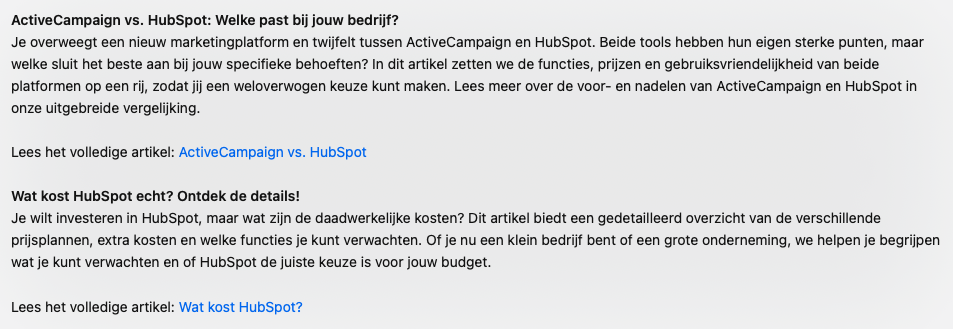
And now: getting started with ChatGPT
ChatGPT is the ideal tool to speed up certain parts of the writing process or to pull you out of a rut when you get stuck. In this article, we've provided some examples of how you can do this.
To use ChatGPT (or other tools) as a writing assistant, it is important that you practice with it.
I often hear from other writers that fine-tuning their prompt takes so much time that they think: never mind, it's faster if I write the article myself.
I thought the same way for a long time, but of course you never get better at working with ChatGPT that way. It wasn't until I started experimenting with it and exchanging tips and tricks with other people that I quickly got better at it.
So your assignment for now is: take an article you want to write or have already written and choose one of the 7 ways from this article to experiment with in ChatGPT.
Have fun!
Related articles
October 3, 2024
-
Reading time: +/- 6 min
July 4, 2024
-
Reading time: +/- 9 min





